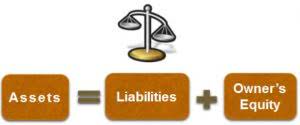Contribution Format Income Statement

To manage growth and make informed decisions, the company’s Chief Operating Officer requested the company’s contribution margin income statement as well as segmented income statements. The contribution margin income statement is an alternative to the traditional income statement. The difference is that this profit and loss statement separates the variable and fixed expenses involved in running a business.

Practice Video Problem 5-2: Companywide and segment breakeven LO7
A contribution margin income statement varies from a normal income statement in three ways. First, fixed production costs are aggregated lower in the income statement, after the contribution margin. Second, variable selling and administrative expenses are grouped with variable production costs, so that they are part of the calculation of the contribution margin. And finally, the gross margin is replaced in the statement by the contribution margin.
- To work out the contribution margin, you need to understand the difference between an item’s fixed and variable expenses.
- Traditional income statements are used to evaluate the overall profitability of a business.
- We will use the same figures from the absorption and variable product cost post.
- Since sales revenue and variable costs are typically driven by units sold these items can be easily traced to a particular segment.
- Fixed production costs, such as rent or salaries, remain constant, regardless of business activity or output.
Common fixed costs
- To understand what contribution income statements are, why they are super important to savvy managers, and how contribution and traditional income statements compare, read on.
- The contribution margin income statement is how you report each product’s contribution margin—a key part of smart operating expense planning.
- First of all, all revenues are allocated to the contribution margin, and variable costs are deducted from all of them.
- Whether you’re a small business owner, a financial analyst, or a C-suite executive, understanding this powerful financial tool can give you a significant edge in managing your company’s finances.
- The company has two major divisions–social media games and cell phone games.
- The contribution margin is a crucial metric for understanding a company’s profitability and efficiency.
For instance, if XYZ Widgets Inc. had $500,000 in annual sales and $200,000 in variable costs, its contribution margin would be $300,000. Traditional income statements are used to evaluate the overall profitability of a business. Contribution formats are more detailed, and are useful for evaluating business segments, such as subsidiaries or divisions, or individual product lines.
Comparative Income Statement
In this comprehensive guide, we’ll explore the intricacies of contribution format income statements, their benefits, and how they can drive business growth. Whether you’re a small business owner, a financial analyst, or a C-suite executive, understanding this powerful financial tool can give you a significant edge in managing your company’s finances. The contribution format income margin is essential for understanding the financial performance of individual products or services and is used to make informed decisions about pricing, production, and cost management.
- Another way to look at traceable fixed costs is these costs could be eliminated if the segment were eliminated.
- Sales revenue is the income received by a company from its sales of goods or the provision of services.
- ABC Cabinets can also use contribution margin analysis to understand each product segment’s break-even point, or the point where it begins to make a profit.
- Coke’s variable-costs are much lower than their fixed-costs because they have so much invested in automation.
- Let’s run through an example to see how the income statement is constructed.
- Traditional income statements separate costs by production (COGS) and administration (SG&A), each of which may be a mix of variable and fixed costs.
- EBIT provides an overall view of the company’s profitability level, whereas contribution margin looks at the profitability of each individual service or product.
Variable Costing Income Statement

Request a contribution margin income statement free demo and see how Cube can help you save time with all your contribution margin income statements, reports, analysis, and planning. A contribution margin income statement is a document that tallies all of a company’s products and varying contribution margins together, helping leaders understand whether the company is profitable. It’s a useful tool for making decisions on pricing, production, and anything else that could improve profitability. Contribution statements record all fixed and variable costs separately, e.g., based on variability only. Meanwhile, traditional statements record all expenses related to production and management, i.e., based on whether an expense is related to production or management costs, regardless of variability.
In the case of XYZ Widgets Inc., a contribution margin of $300,000 and annual fixed costs of $100,000 would give a total income before tax of $200,000. The «contribution margin» is the difference between total sales and variable costs. Variable costs can include production expenses, such as materials, supplies and overhead, as well as variable selling and administrative expenses, such as sales commissions and distribution costs. The contribution margin measures the contribution of the sales efforts toward the bookkeeping company’s profits, without regard for fixed costs, taxes or other costs not directly related to sales.
The Contribution Margin Income Statement
In fact, Coca Cola’s assembly line only requires one employee to run the filling station that fills https://www.bookstime.com/articles/what-are-t-accounts more than 2,000 soda cans a minute. Coke’s variable-costs are much lower than their fixed-costs because they have so much invested in automation. Contribution margin and regular income statements can be very detailed, requiring an in-depth understanding of the business’s inner workings. Taxes and other company expenses can obscure how well a company’s products or services perform.

What does EBITDA mean on an income statement?
As we have seen, the contribution margin is a powerful and much-appreciated tool for assessing the relationship between companies’ expenses and revenues. The main advantage of this format is that you get much more organized data with a contribution margin. That will allow you to control the different changes in both volume and sales. That means 63% of your revenue is available to cover fixed expenses and profit.

Vertical Analysis in the Balance Sheet
Earnings Before Interest and Taxes (EBIT) is the company’s net income before applying taxes and interest rates. Although variable costs are more difficult to track, they are absolutely essential in predicting the true profitability of products such as electric vehicles, despite reductions in fixed costs. In its simplest form, a contribution margin is the price of a specific product minus the variable costs of producing the item. What’s left is the contribution margin, which gives a sense of how much is left over to cover fixed expenses and make a profit. Using a hypothetical company, let’s look at how a contribution margin income statement compares to a traditional income statement. This standard format can give you a great financial snapshot of how your business is doing.


